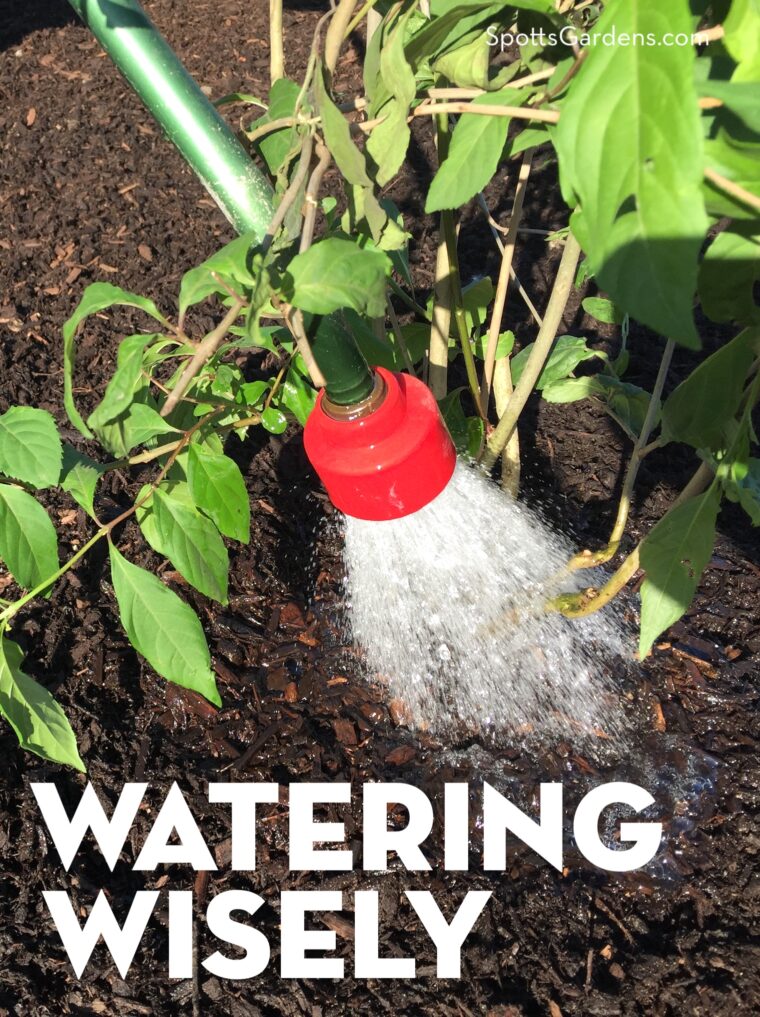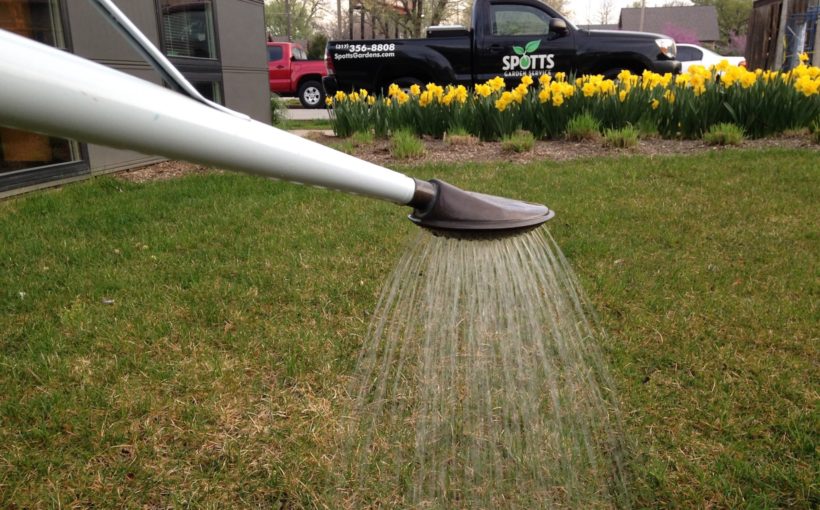Most established garden plants (and lawns) want about 1″ of water a week, no matter what the weather is doing. We favor tough plants that can go for stretches without supplemental water, but after a few weeks of no rain, even the stoutest garden benefits from a drink. Here are a few tips to help you reduce the amount of water you use in the garden.
Make Your Garden Water Wise
Put the right plant in the right place. Choose plants that will be happy in your soil and with the amount of sun they get. If you like their looks, choose native plants: purple coneflowers (Echinacea) and black-eyed Susans (Rudbeckia) can take the heat with little coddling. Other good bets are sunflowers, ornamental grasses, daylilies, cornflowers, bearded iris, yarrow, salvia, cosmos, lilies, asters, succulents, and most herbs.
Mulch it. That 2″ to 4″ layer of mulch helps the soil retain moisture. Don’t forget to mulch pots too!

Water the Right Amount
Know how much water you already get. A rain gauge can help you keep track of this week’s rainfall; try to empty it on the same day every week.
Adjust your watering depending on how much rain we’ve received. The average garden (and lawn) needs about 1″ of water a week. But established plants can often go much longer without water.
Plants will tell you when they need watering; they’ll start to look stressed and droopy. Listen to your plants, and you’ll help keep the water bill low. In a drought, don’t forget to water your shrubs and trees as well as the usual annuals, perennials, and vegetables.
Water the Right Way
Water deeply and infrequently. Shallow, frequent watering encourages plant roots to stay near the surface, when you really want them to go deep. So whether you’re watering your garden or lawn, stick with deep watering a couple of times a week.
Water at the soil line. Watering plants’ leaves can promote fungal disease. Instead, stick the hose or watering can right at ground level so all the water gets to the plant roots.
Water in the morning. Watering in the heat of the day causes the water to evaporate more quickly, while watering in the evening slows the drying time, sometimes promoting fungal disease. Try to get out the hose in the cooler morning hours; you can enjoy your garden before all the neighbors are out!
Water new plants throughout the growing season. While most mature plants like 1″ of water a week, baby your new plants along with a little extra water. Don’t forget to water shrubs and trees too.
